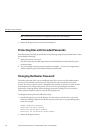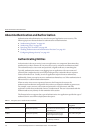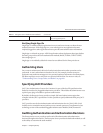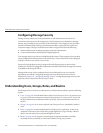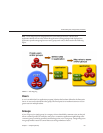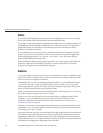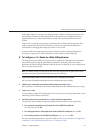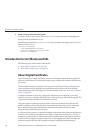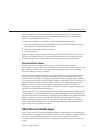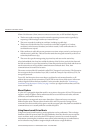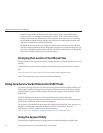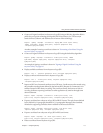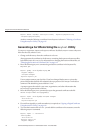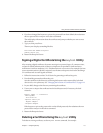
Assign a security role tousers in the realm.
To assign a security role to a user, add a security-role-mapping element to the deployment
descriptor that you modied in
Step 4.
The following example shows a security-role-mapping element that assigns the security role
Employee to user Calvin.
<security-role-mapping>
<role-name>Employee</role-name>
<principal-name>Calvin</principal-name>
</security-role-mapping>
Introduction to Certicates and SSL
The following topics are discussed in this section:
■
“About Digital Certicates” on page 108
■
“About Secure Sockets Layer” on page 109
About Digital Certicates
Digital certicates (or simply certicates) are electronic les that uniquely identify people and
resources on the Internet. Certicates also enable secure, condential communication between
two entities.
There are dierent kinds of certicates, such as personal certicates, used by individuals, and
server certicates, used to establish secure sessions between the server and clients through
secure sockets layer (SSL) technology. For more information on SSL, see
“About Secure Sockets
Layer” on page 109
.
Certicates are based on public key cryptography, which uses pairs of digital keys (very long
numbers) to encrypt, or encode, information so it can be read only by its intended recipient. The
recipient then decrypts (decodes) the information to read it.
A key pair contains a public key and a private key. The owner distributes the public key and
makes it available to anyone. But the owner never distributes the private key; it is always kept
secret. Because the keys are mathematically related, data encrypted with one key can be
decrypted only with the other key in the pair.
A certicate is like a passport: it identies the holder and provides other important information.
Certicates are issued by a trusted third party called a Certication Authority (CA). The CA is
analogous to passport oce: it validates the certicate holder's identity and signs the certicate
so that it cannot be forged or tampered with. Once a CA has signed a certicate, the holder can
present it as proof of identity and to establish encrypted, condential communications.
5
Introductionto Certicatesand SSL
SunGlassFishEnterpriseServer2.1AdministrationGuide • December2008108



